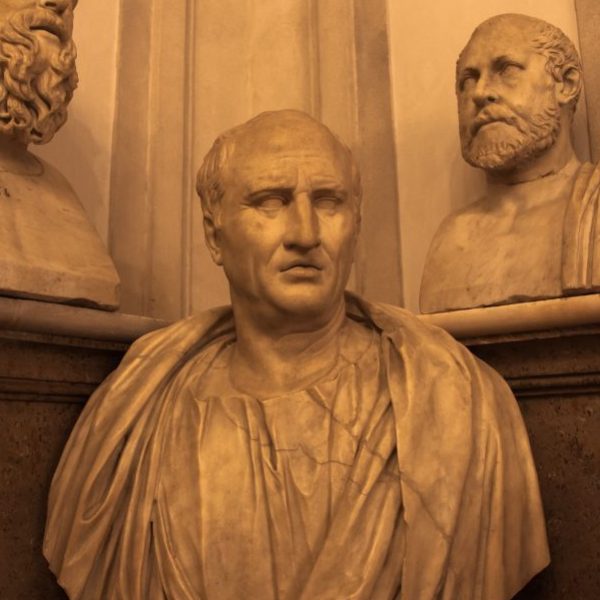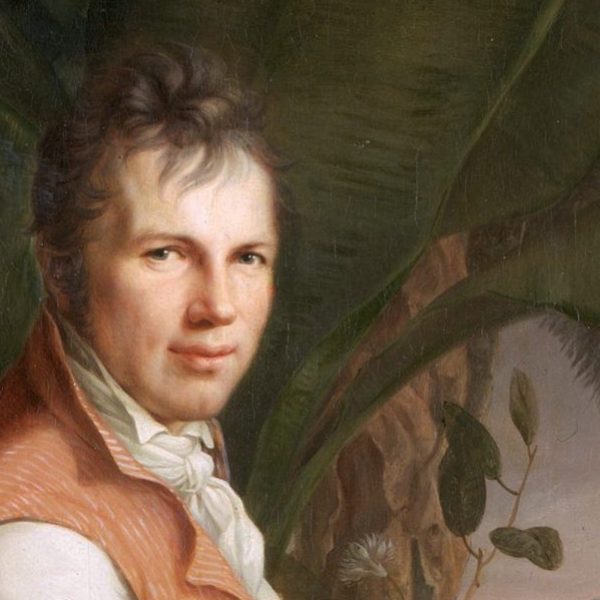Deborah Valenze on the History of Milk

Deborah Valenze, credit: Emma V. Gilmore
In honor of National Dairy Month in June, we thought you might like a taste of Deborah Valenze’s Milk: A Local and Global History, covering the illuminating cultural history of milk, from ancient myth to modern grocery store, now available in paperback from Yale University Press.
Deborah Valenze—
Cows that have names give more milk than cows without names. This discovery won recognition at the 2009 Ig Nobel awards, an annual event in Cambridge, Massachusetts, organized to ‘first make people laugh and then make them think.’’ I didn’t laugh, though, because the question of naming cows had come up in conversations with dairy farmers I had sought out in Vermont, Switzerland, and England. A note of condescension might have crept into one or two responses, but managers of milk production know what’s at stake in the question. Cows respond to sensitive, personalized handling; they’re acutely aware of environmental factors, particularly so in the incongruous realm of modern milking machinery. Dairy farmers report their cows expressing joy, jealousy, sulkiness, and fear. When handlers interacted with cows with respect and affection, annual milk output averaged slightly more than sixty-eight gallons higher than in less friendly settings. Not for nothing did Wisconsin dairy farmers once use as their motto ‘‘Speak to a cow as you would a lady.’’ And in 1997, a major milk corporation included a kindness clause in its contract with client farmers. If one locus in the contemporary world still finds economic value in chivalry and tenderness, it’s the dairy barn.
Dairies nowadays expect to host visitors yearning for an encounter with bovine charisma. This gives farmers an opportunity to educate the public and reaffirm popular support for a beleaguered industry, considered by most governments to be a revenue-draining public service.
Popular affection for cows has always helped the cause. Take, for example, the live cows bathed and milked on a merry-go-round (called a ‘‘rotolactor’’) exhibited at the New York World’s Fair in 1939. Or the life-size ‘‘cow parade’’ figures that appeared in cities around the world in 1999, designed to elicit affection and then, it was hoped, hefty prices at charity auctions. Although not all cow paraphernalia relates to milk, most of it does in regions that depend on the industry. Departing from a Swiss airport requires passing through a gauntlet of cow backpacks, cream pitchers, and cow-print oven mitts. The Swiss nation is collectively in love with an animated ‘‘real’’ cow named Lovely, who dribbles soccer balls and ice skates her way through hilarious commercials for milk. I will confess to some advocacy of my own: our family car proudly displays a bumper sticker bearing a cow’s face and the words ‘‘Got Vermont?’’ The humor, of course, comes from the cow itself adopting celebrity status in the manner of one of the most successful advertising campaigns of the twentieth century.
 Cow love is intimately tied to milk history and always has been. A quick look through the annals of world mythology turns up cows of plenty and visions of oceans of milk. Not all milk in history has come from cows, but then, our attachment to cows raises an interesting historical question: how and why have we become attached to cow’s milk? This is the problem with which I began this book. As a historian of English dairying, I knew that the question was moot long ago: the eighteenth-century cow had already proven its worth as the most prolific producer of nourishment, at a time when quantity mattered more than even digestibility. As a food ingredient, cow’s milk had more versatility and wider palatability (in other words, a blander taste) than others. Cows were quintessential docile bodies, suited to large-scale systematizing of production. And probably most important of all, cows were the favored domesticated farm animals of ambitious, commercial-minded western Europeans and Americans. Cows went where their masters went, which was nearly everywhere. It became apparent to me very quickly that the story of modern milk was one of conquest of space, energy, and dietary preferences. The commodity of milk today has triumphed as a universal icon of modern nutrition, despite all attempts to deny it supremacy.
Cow love is intimately tied to milk history and always has been. A quick look through the annals of world mythology turns up cows of plenty and visions of oceans of milk. Not all milk in history has come from cows, but then, our attachment to cows raises an interesting historical question: how and why have we become attached to cow’s milk? This is the problem with which I began this book. As a historian of English dairying, I knew that the question was moot long ago: the eighteenth-century cow had already proven its worth as the most prolific producer of nourishment, at a time when quantity mattered more than even digestibility. As a food ingredient, cow’s milk had more versatility and wider palatability (in other words, a blander taste) than others. Cows were quintessential docile bodies, suited to large-scale systematizing of production. And probably most important of all, cows were the favored domesticated farm animals of ambitious, commercial-minded western Europeans and Americans. Cows went where their masters went, which was nearly everywhere. It became apparent to me very quickly that the story of modern milk was one of conquest of space, energy, and dietary preferences. The commodity of milk today has triumphed as a universal icon of modern nutrition, despite all attempts to deny it supremacy.
But a narrative of conquest hardly does justice to what has turned out to be a story full of mystery, myth, and impassioned debate. Despite the compulsory feel of milk today, its history is just as often about suspicion cast on the opaque white liquid. For many centuries, milk was regarded as dangerous and even repulsive. (And, we might add, this remains true today for some people, for different reasons.) Anthropologists tell us that human consumption of animal milk and its products constitutes an aberration of animal nature that our ancient ancestors had to rework in their own minds. Denying young animals nourishment of their mother’s milk puts progeny at risk; it requires inserting human agency where it does not belong. Transforming milk into butter and cheese represents another violation of taboo; note the telltale revulsion we feel toward, say, eating cheese made of breast milk. Non-milk-drinking cultures feel that milk is an unclean animal fluid, like urine. In eighteenth-century Buddhist Japan, milk was thought to be ‘‘white blood,’’ which, if drunk, would bring down divine retribution. It is worth remembering that evolutionary geneticists see lactose tolerance, not intolerance, as the deviant trait that later spread across certain, often northern, populations. Over several millennia, religions endowed milk with added value, helping to convince consumers of its legitimacy as nourishment, apart from its identity as first food.
Milk, a liquid associated with kindness and love, has never been free from conflict throughout history. Its most obvious purpose, that of feeding people, developed unevenly. The bestial origins of milk marked the liquid as barbaric, at least for southern Europeans with early pretensions to civility. Urban dwellers showed disdain for the liquid, or actively feared it because of Greek dietetic proscriptions. From the sixth century, milk and dairy products were regarded as forbidden foods on Christian fast days, following Saint Gregory’s prohibition of all things that came from flesh. Few elites ever imagined drinking milk, except, perhaps, while on a recreational visit to the countryside. In small amounts, when consumed at the right times, milk products were considered safe by early medical experts. But because of its perishable nature, which could easily sicken careless consumers, milk ranked as a dangerous aliment well into the seventeenth century.
Fortunately for the ensuing history of human food, milk also conjured up a contradictory theme from the start. Its pallor and fragrance sang of bucolic purity and abundance. In answer to the sophistication of civility, milk struck notes of simplicity. Its bounty, commonly displayed in cheese and butter, was impossible to deny, as, for instance, in the record-breaking rounds of cheese coming from Italy in the fifteenth century. Charles VIII sent a giant sample as a gift to the queen of France in 1494, perhaps hoping to impress her. By this time, cows ‘‘of broken colors’’ were already identified as big milk producers in Lombardy and the Low Countries. In the Rhineland, Dutch milk earned comparison to wine and was regarded of greater value. The ‘‘Butter Tower’’ of Rouen Cathedral, constructed with donations enabling townspeople to eat butter during Lent (the Catholic Church granted ‘‘lacticinia’’ dispensations for those who offered charity), stands as a bold tribute to the French devotion to the dairy. And butter flowed from places like Bruges, where residents ate it with every meal. ‘‘Bring a knife,’’ a resident instructed a French friend in a letter.
Examples such as these convinced me of the special nature of milk and its products as subjects of history. It may be that every author sees the subject of her book as special, but in this case, I felt I had an arguable case. My hunch was buoyed up repeatedly by evidence from many fields of knowledge, besides history, that regarded milk as imbued with unique characteristics. From this, I made my primary discovery, which at first seemed simple: it was the formative—one might say definitive—role of context in shaping the path of milk through history. Each appearance of milk seemed deeply situated in its setting, or weighed down with ‘‘cultural baggage.’’ And in establishing a relationship with the product, societies seem to have generated a surplus of imaginative thoughts about milk, at times so thoroughly enmeshing it within beliefs that the actual nature of milk—if we can use that term—was eclipsed by everything else.
There can be no milk without the contexts woven into its past: this absorptive relationship happens with all food products to a greater or lesser extent, but with milk, an added virtue lay in how its cultural history had something bigger to say about the history of food. Situated in culture, milk acted as a mirror of its host society, reflecting attitudes toward nature, the human body, and technology. Moreover, its larger presence as a liquid in diets since the beginning of the twentieth century became a litmus test of wealth and attitudes toward modern food production. In the historical record, milk repeatedly called attention to the larger forces of change. Milk, then, becomes a marker of the emergence of a peculiarly Western food culture and its path into the modern age.
Deborah Valenze is professor of history at Barnard College. Excerpted from Milk: A Local and Global History, copyright © 2011 by Deborah Valenze.




